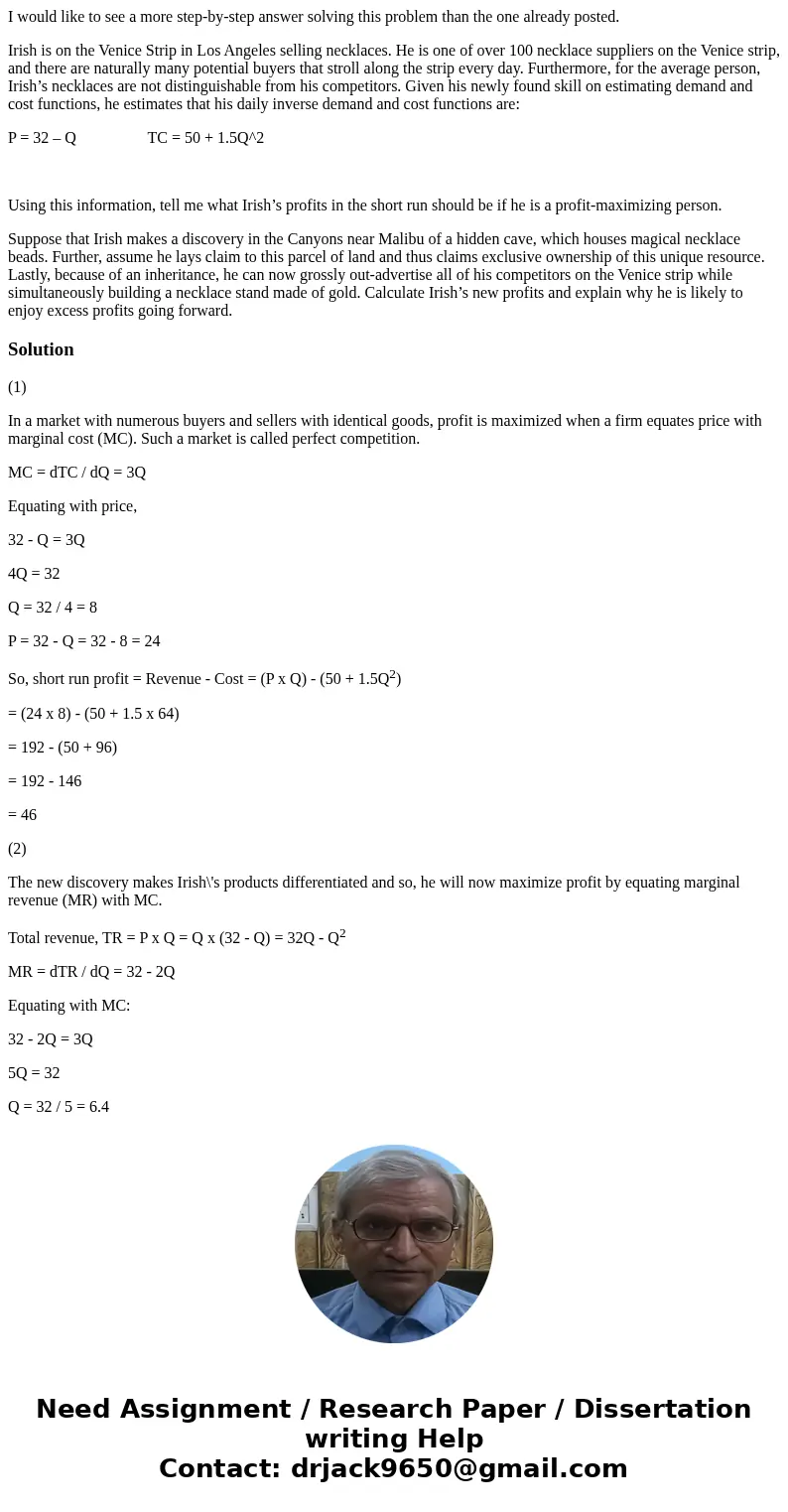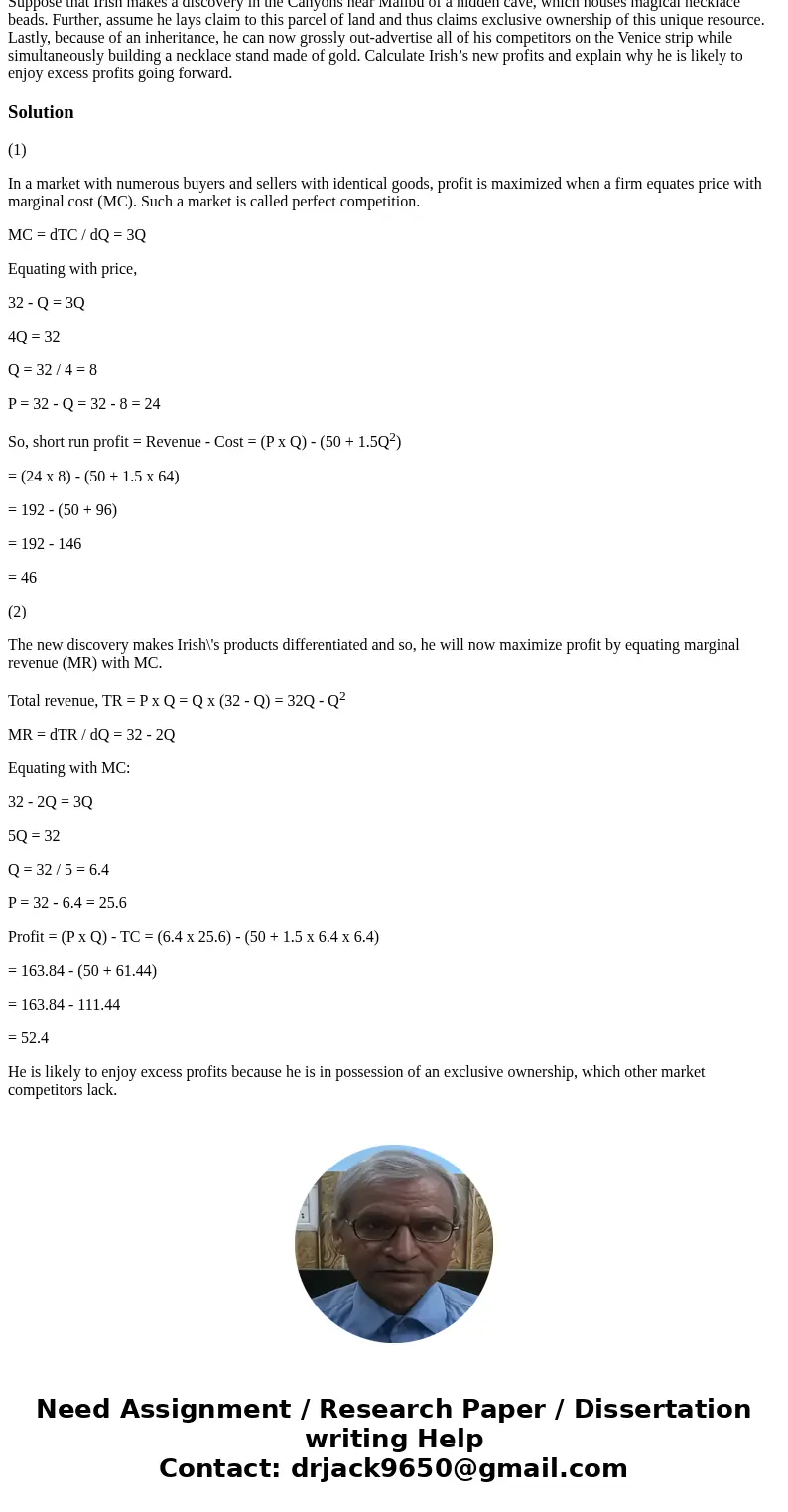I would like to see a more stepbystep answer solving this pr
I would like to see a more step-by-step answer solving this problem than the one already posted.
Irish is on the Venice Strip in Los Angeles selling necklaces. He is one of over 100 necklace suppliers on the Venice strip, and there are naturally many potential buyers that stroll along the strip every day. Furthermore, for the average person, Irish’s necklaces are not distinguishable from his competitors. Given his newly found skill on estimating demand and cost functions, he estimates that his daily inverse demand and cost functions are:
P = 32 – Q TC = 50 + 1.5Q^2
Using this information, tell me what Irish’s profits in the short run should be if he is a profit-maximizing person.
Suppose that Irish makes a discovery in the Canyons near Malibu of a hidden cave, which houses magical necklace beads. Further, assume he lays claim to this parcel of land and thus claims exclusive ownership of this unique resource. Lastly, because of an inheritance, he can now grossly out-advertise all of his competitors on the Venice strip while simultaneously building a necklace stand made of gold. Calculate Irish’s new profits and explain why he is likely to enjoy excess profits going forward.
Solution
(1)
In a market with numerous buyers and sellers with identical goods, profit is maximized when a firm equates price with marginal cost (MC). Such a market is called perfect competition.
MC = dTC / dQ = 3Q
Equating with price,
32 - Q = 3Q
4Q = 32
Q = 32 / 4 = 8
P = 32 - Q = 32 - 8 = 24
So, short run profit = Revenue - Cost = (P x Q) - (50 + 1.5Q2)
= (24 x 8) - (50 + 1.5 x 64)
= 192 - (50 + 96)
= 192 - 146
= 46
(2)
The new discovery makes Irish\'s products differentiated and so, he will now maximize profit by equating marginal revenue (MR) with MC.
Total revenue, TR = P x Q = Q x (32 - Q) = 32Q - Q2
MR = dTR / dQ = 32 - 2Q
Equating with MC:
32 - 2Q = 3Q
5Q = 32
Q = 32 / 5 = 6.4
P = 32 - 6.4 = 25.6
Profit = (P x Q) - TC = (6.4 x 25.6) - (50 + 1.5 x 6.4 x 6.4)
= 163.84 - (50 + 61.44)
= 163.84 - 111.44
= 52.4
He is likely to enjoy excess profits because he is in possession of an exclusive ownership, which other market competitors lack.


 Homework Sourse
Homework Sourse